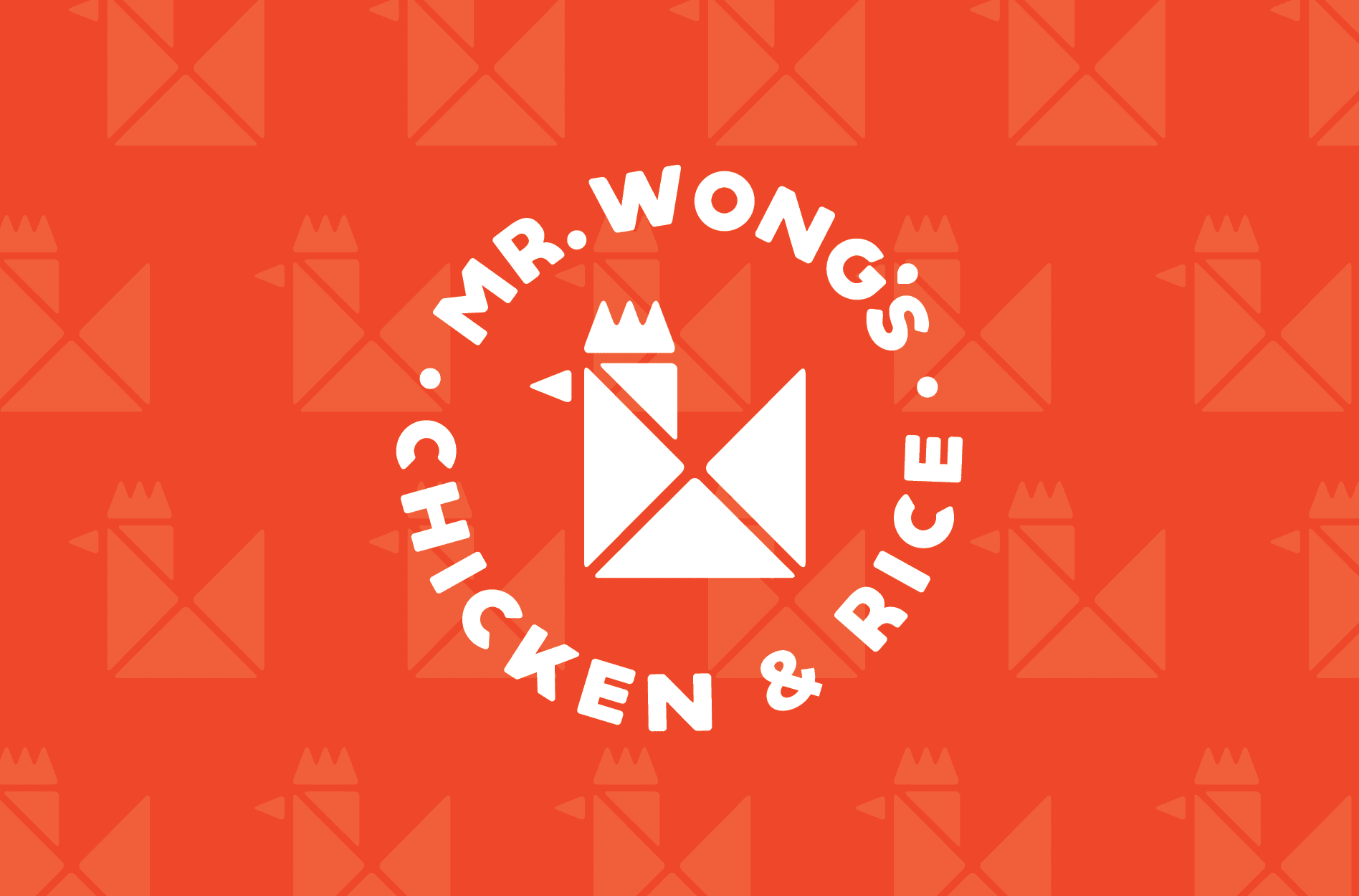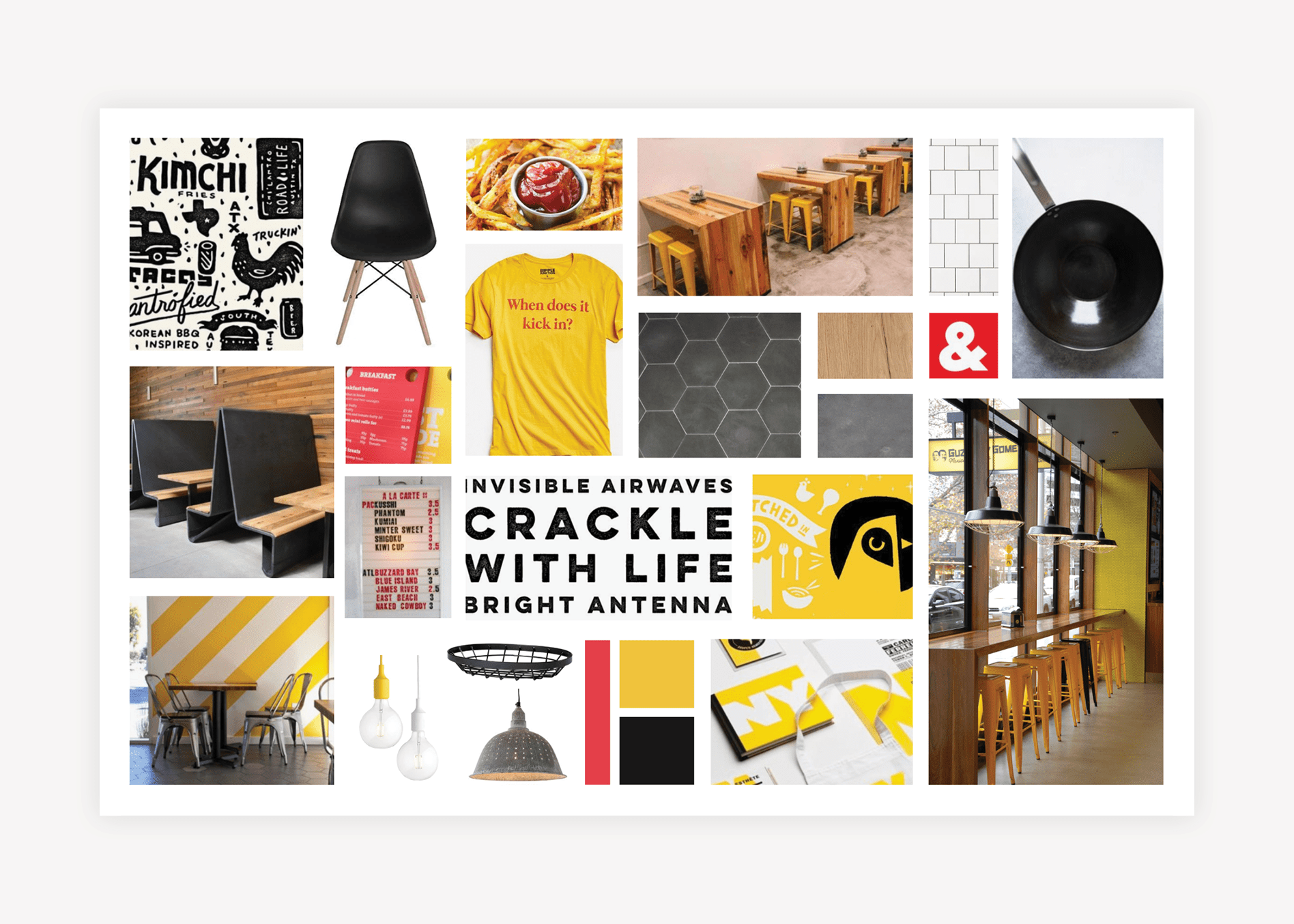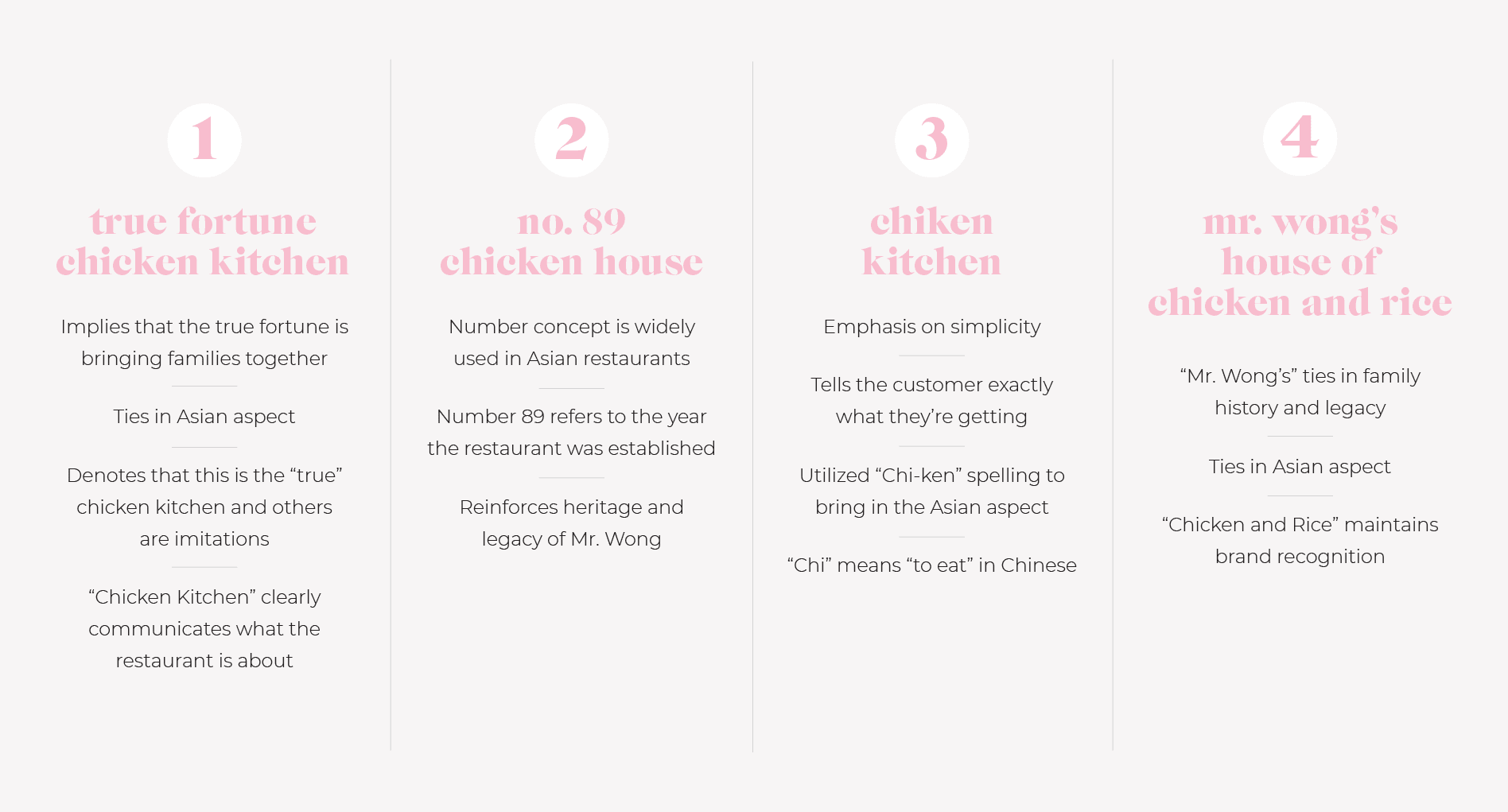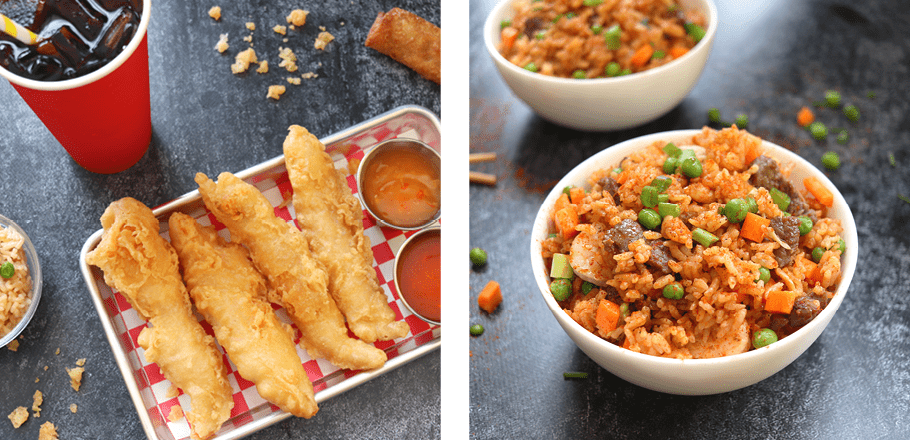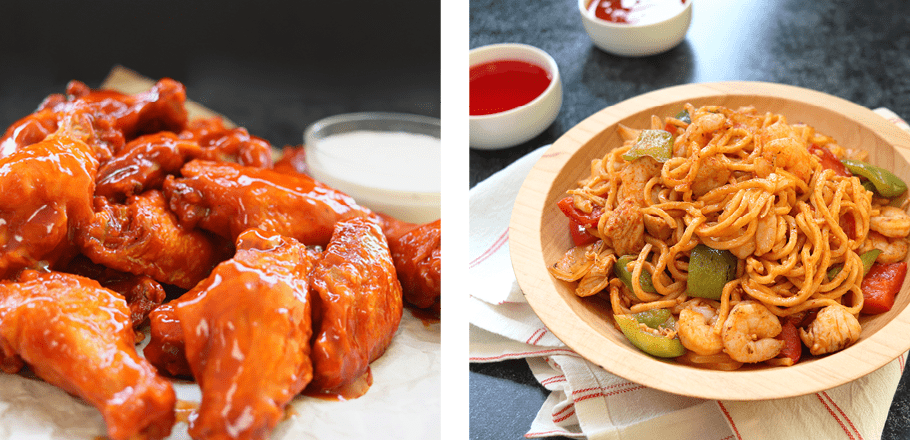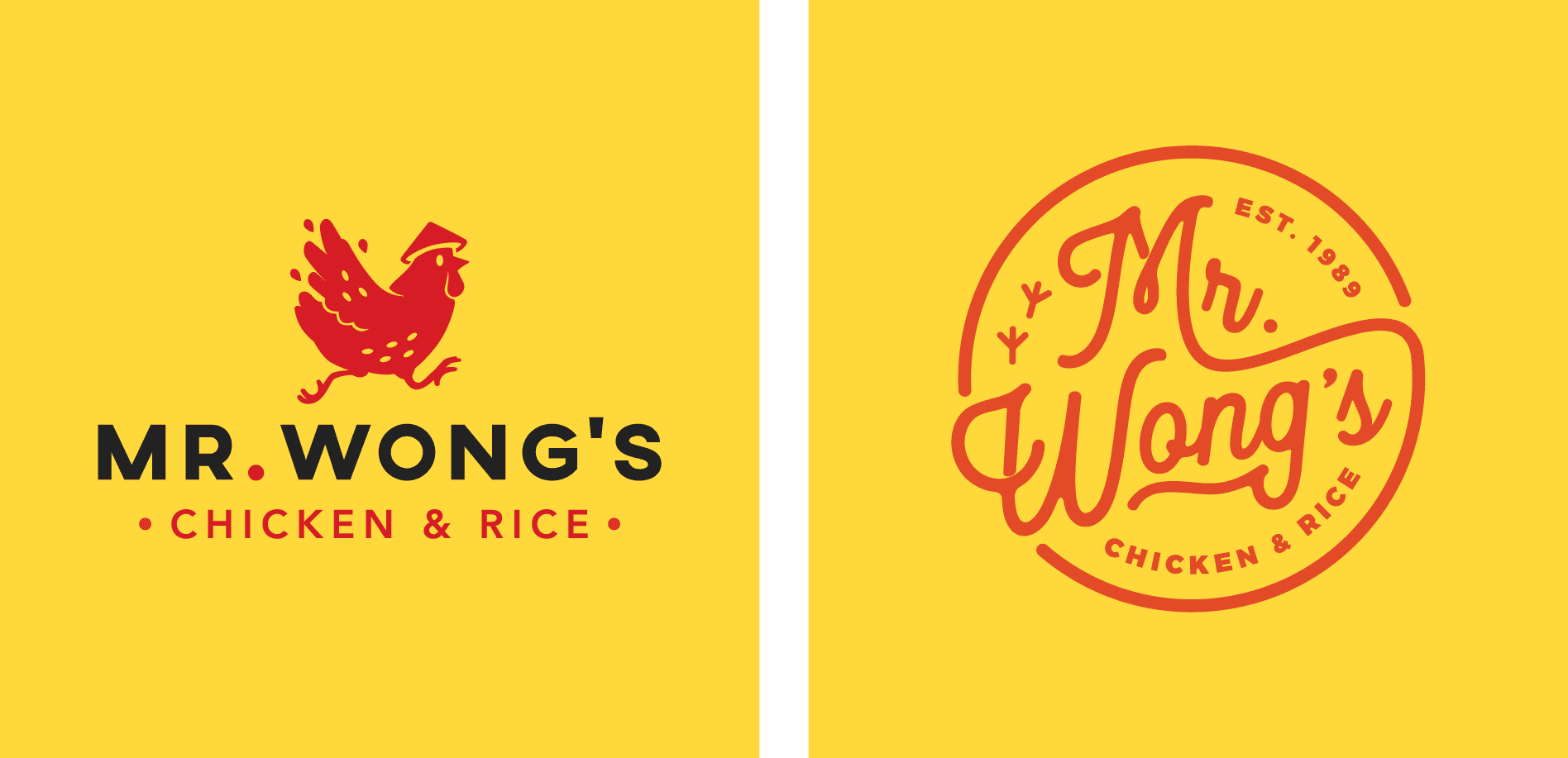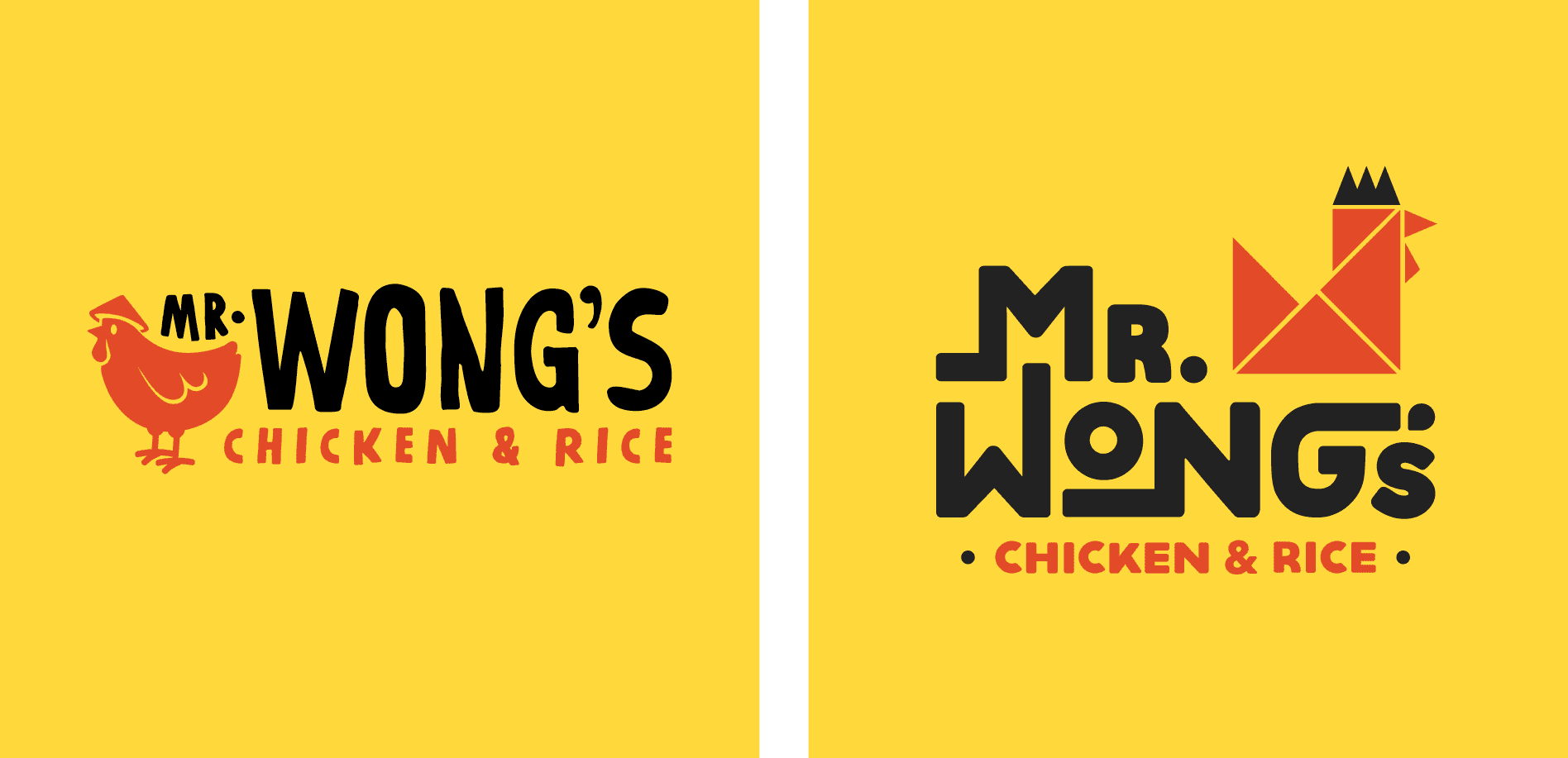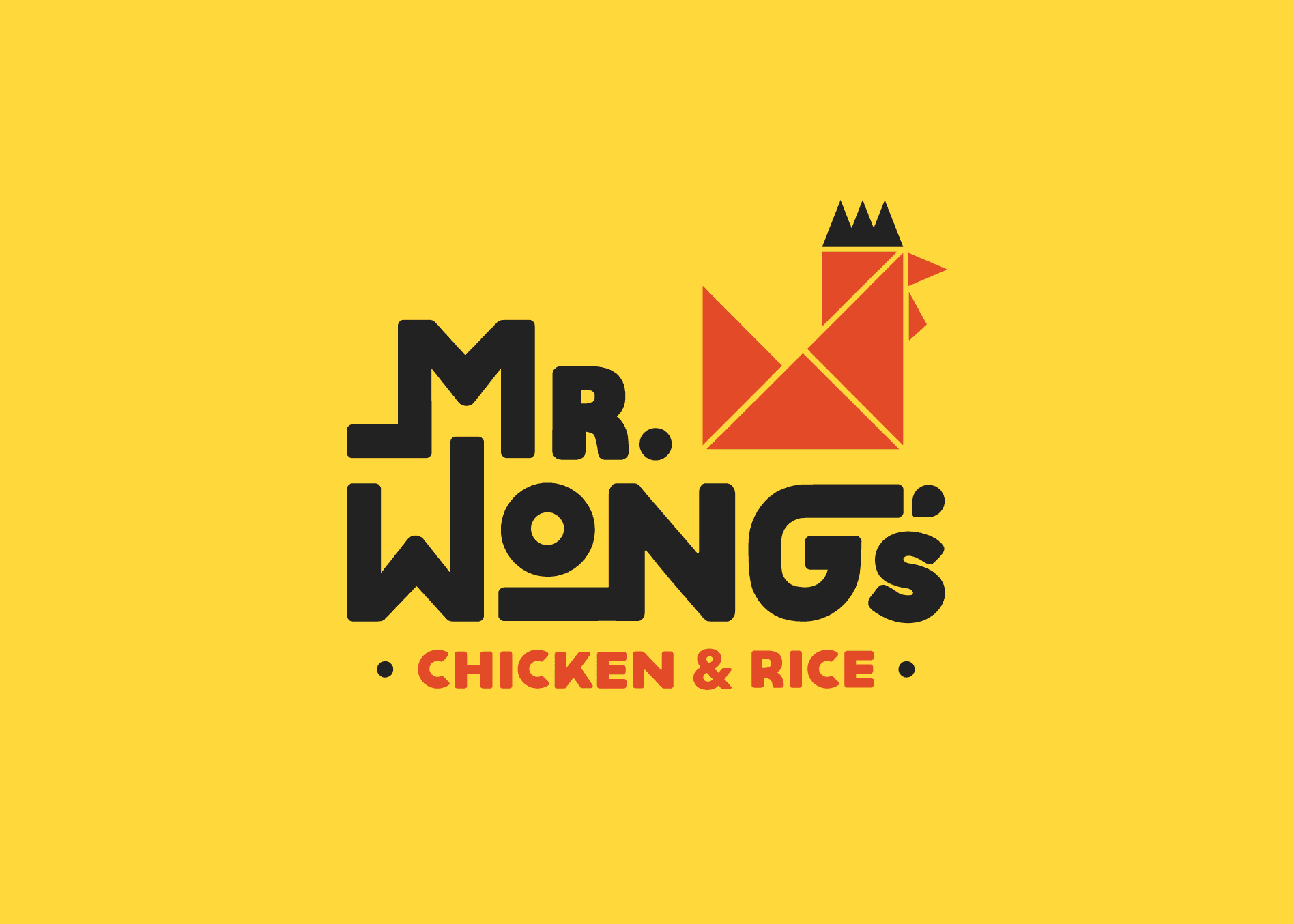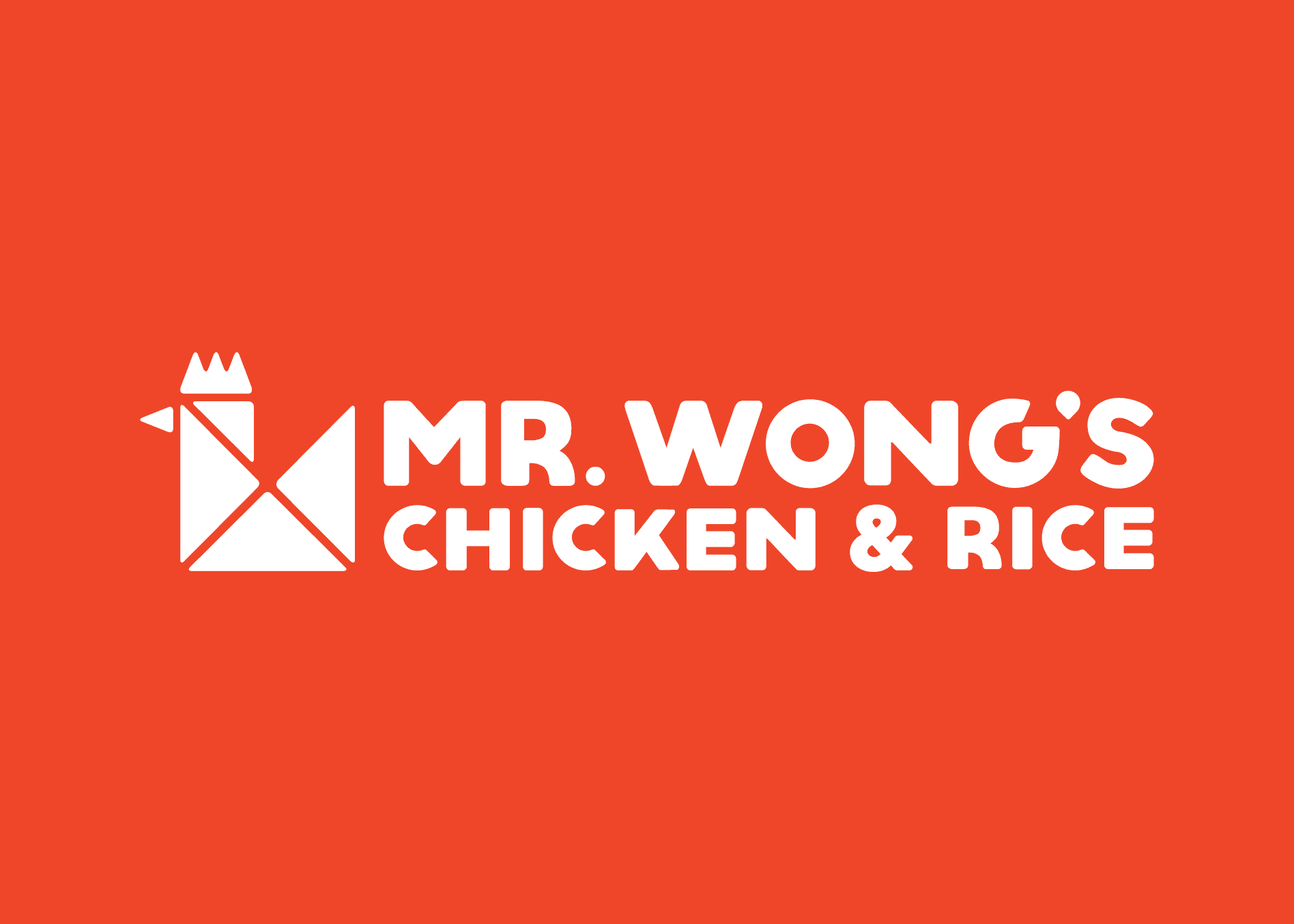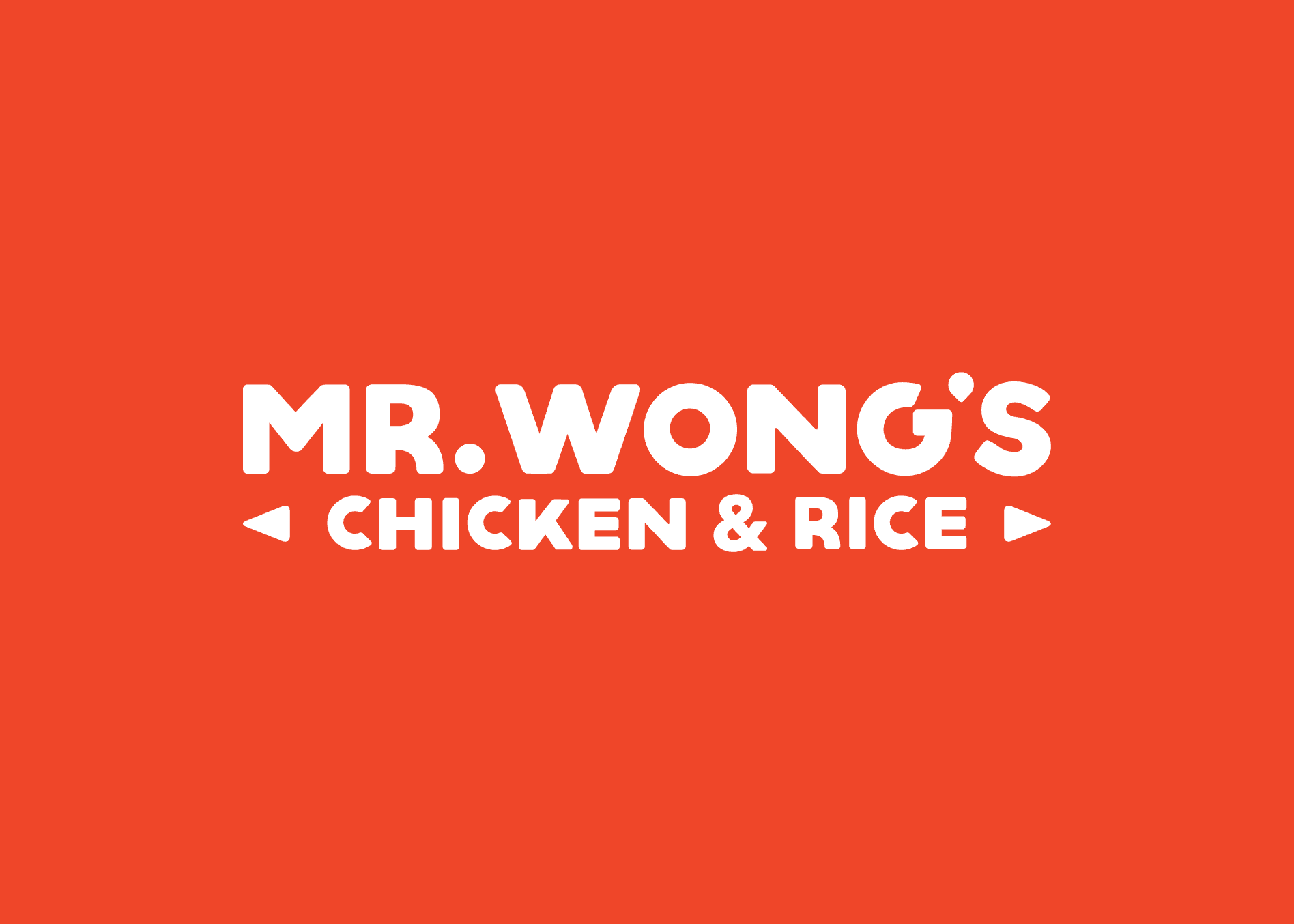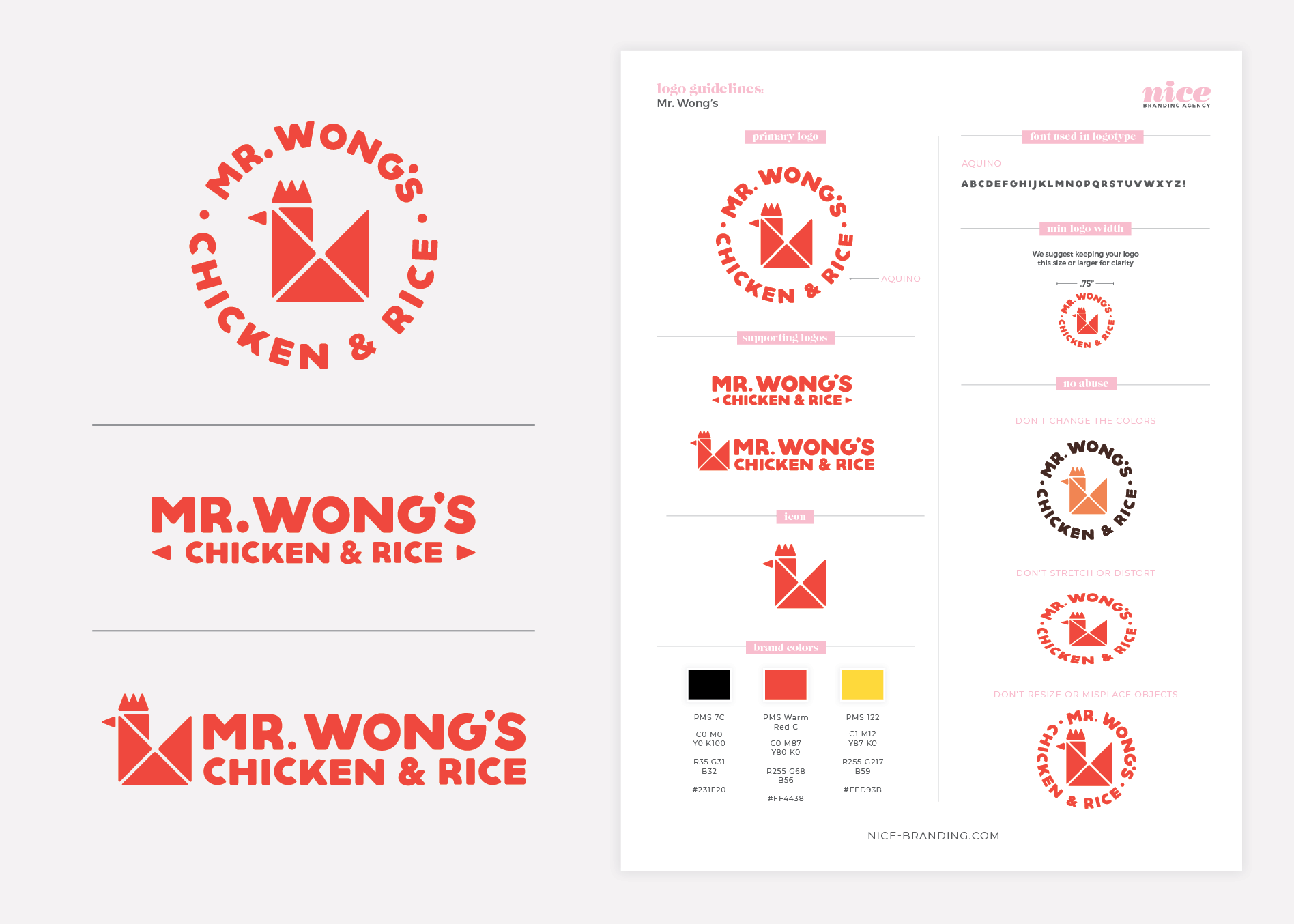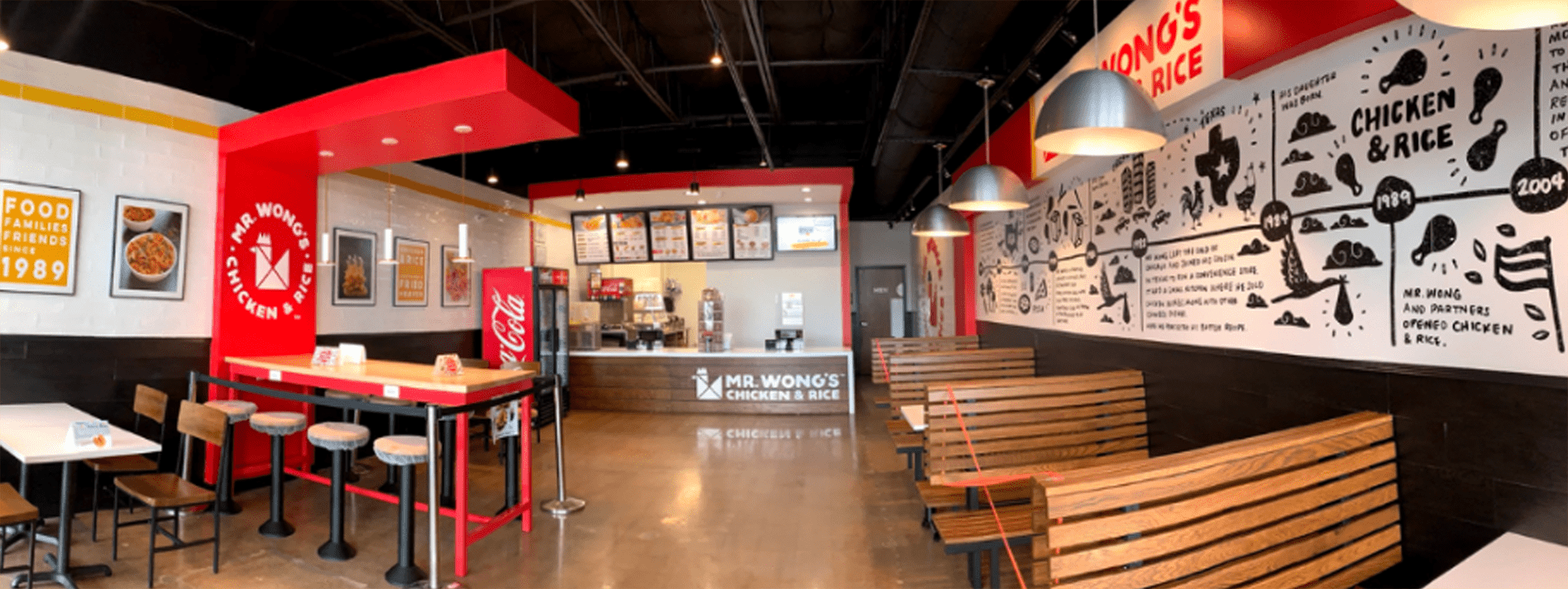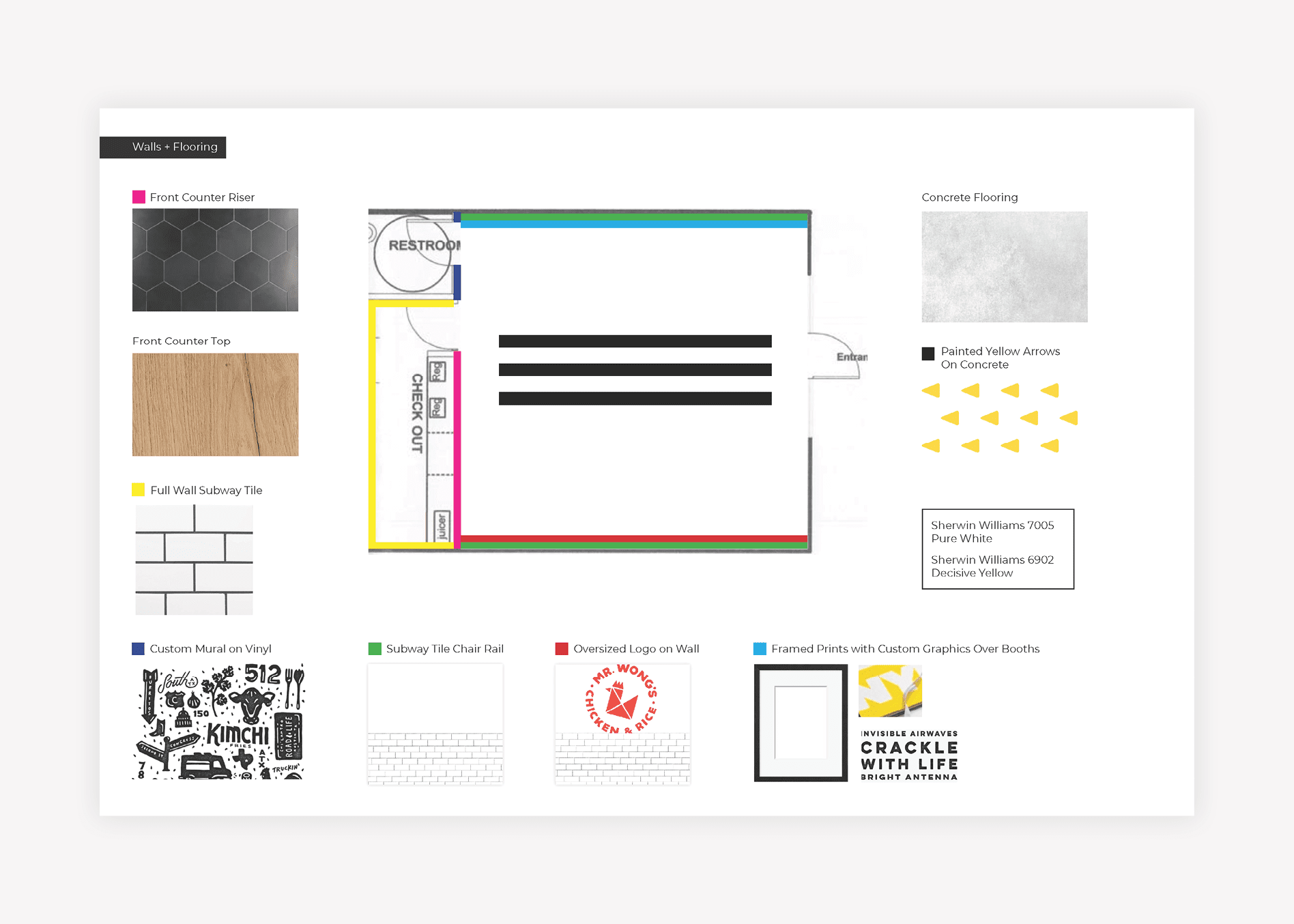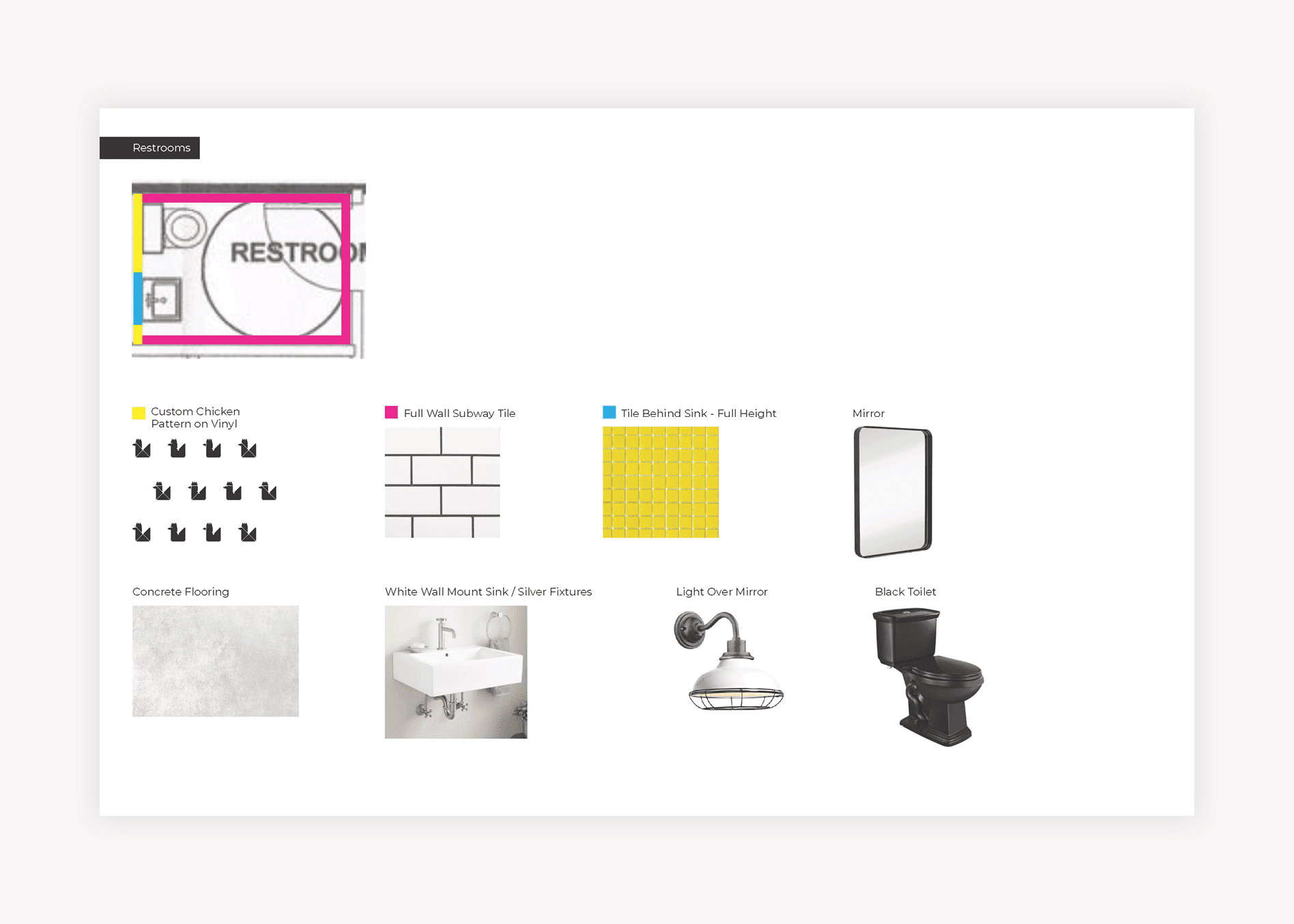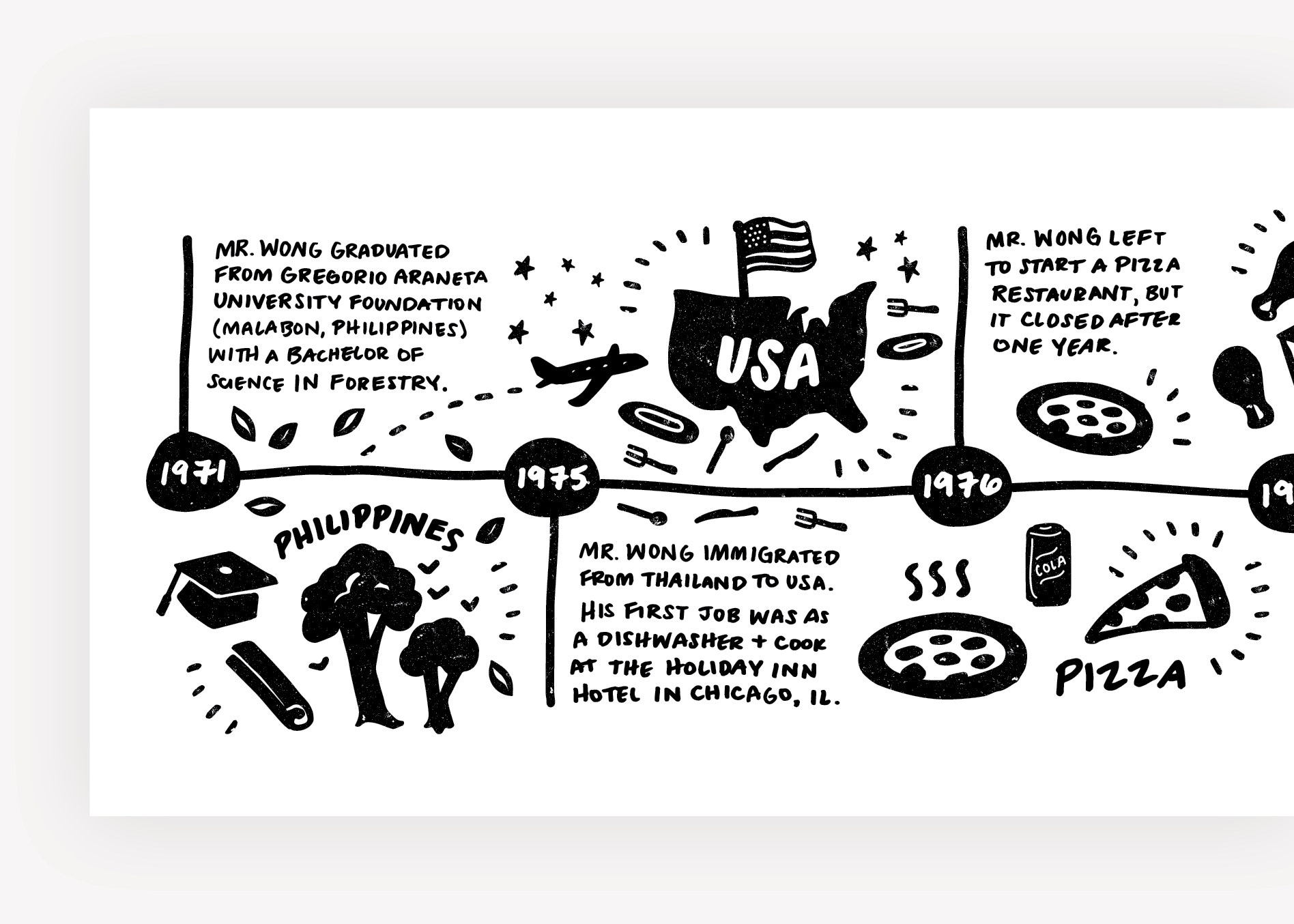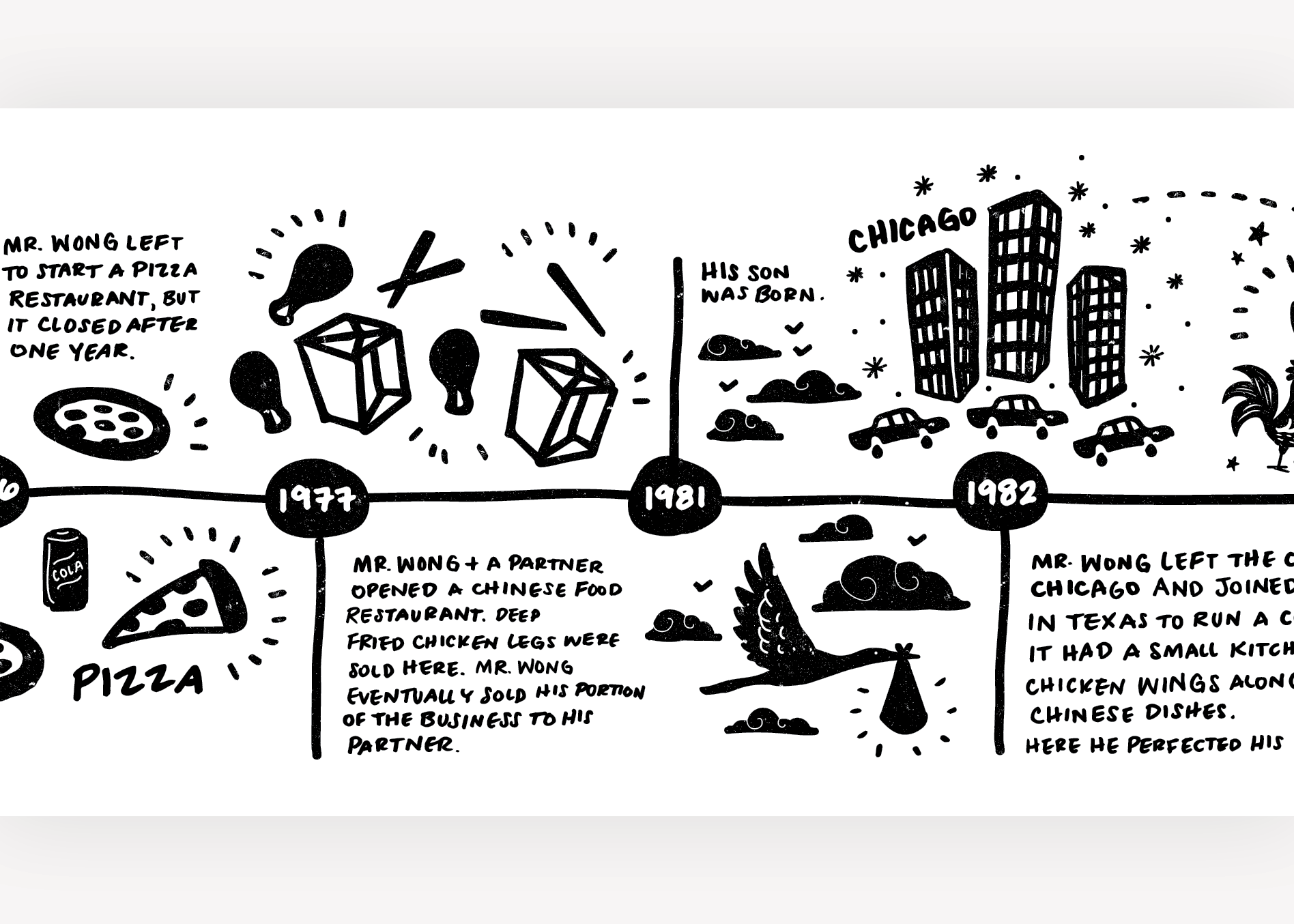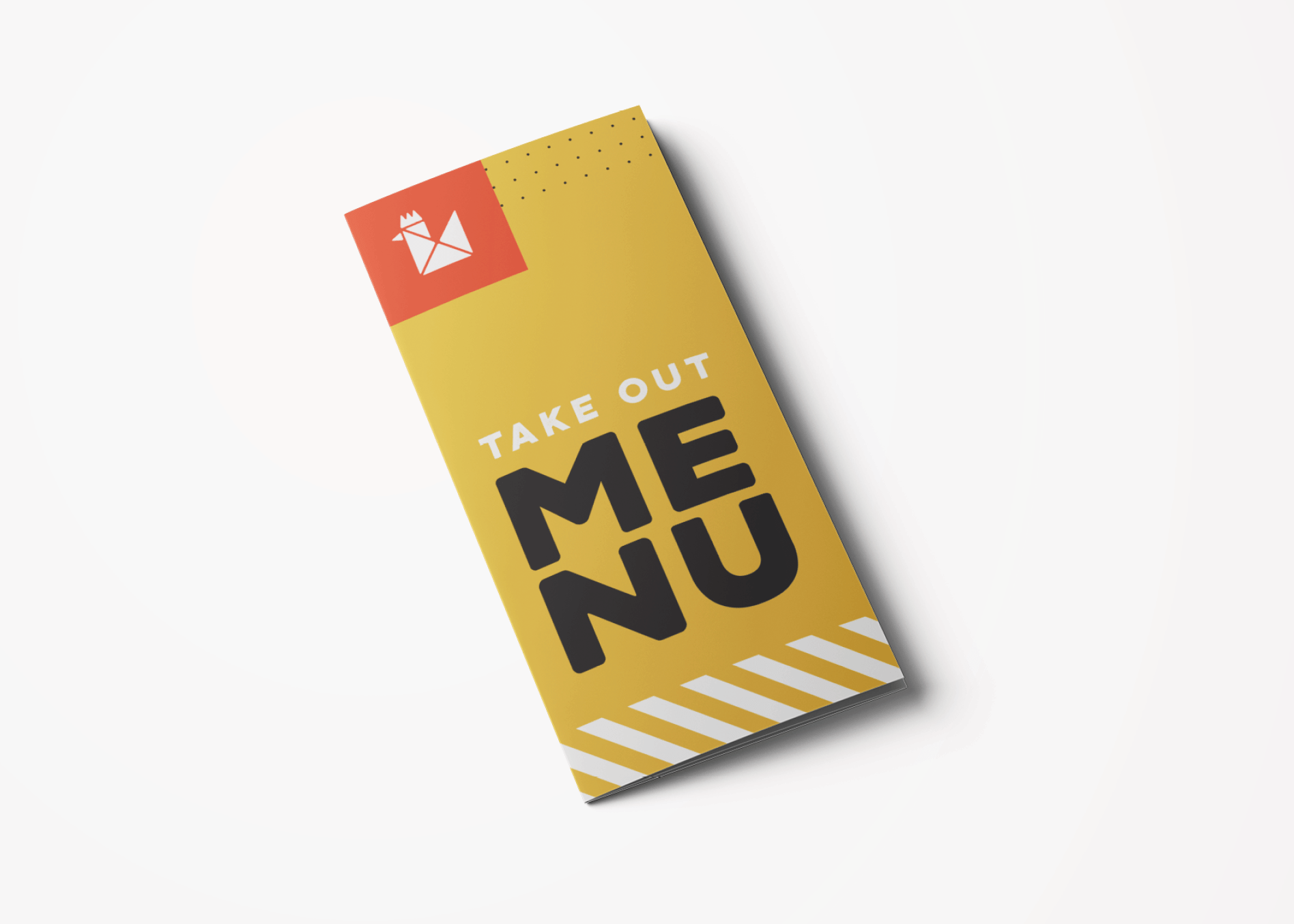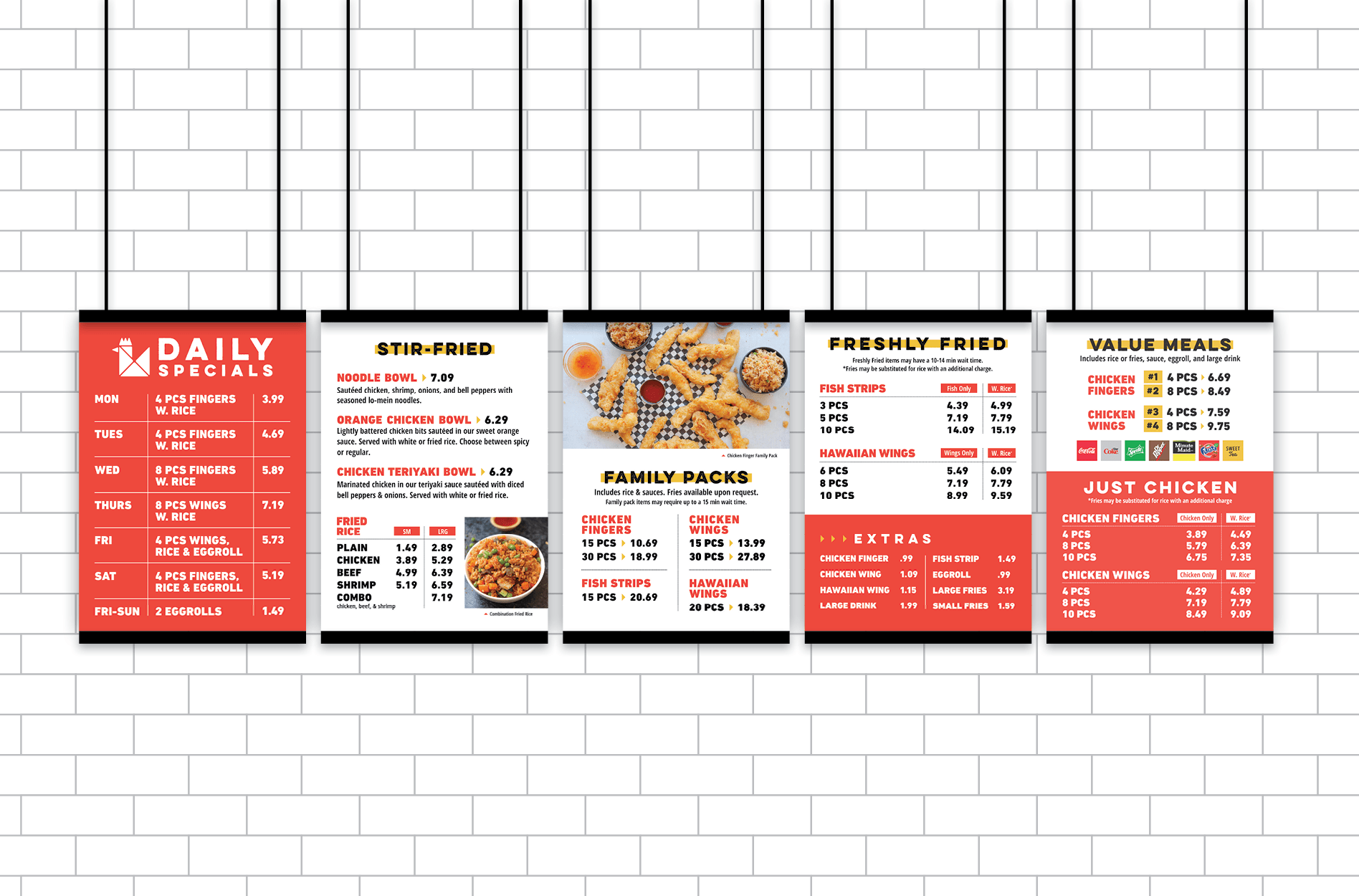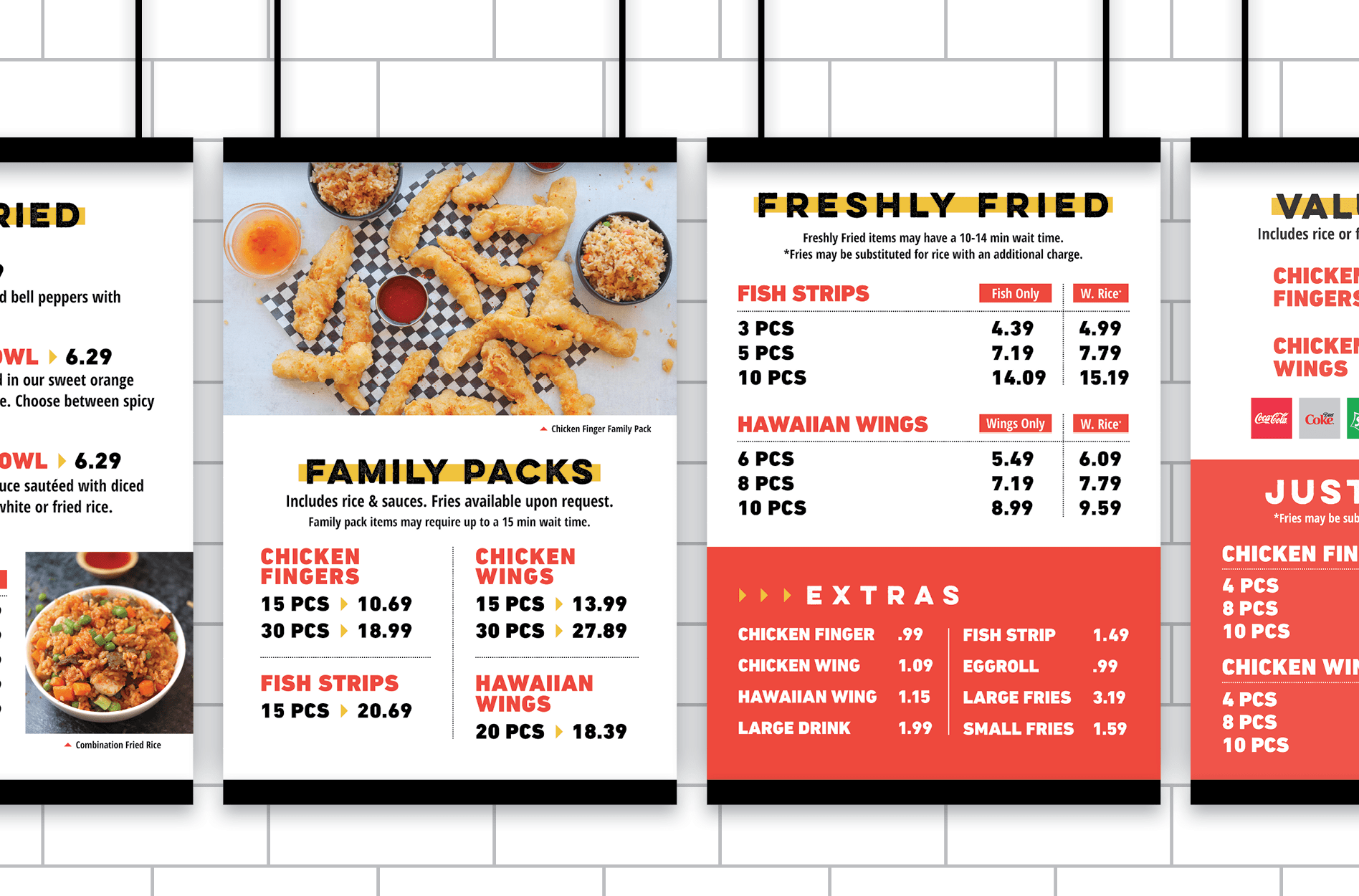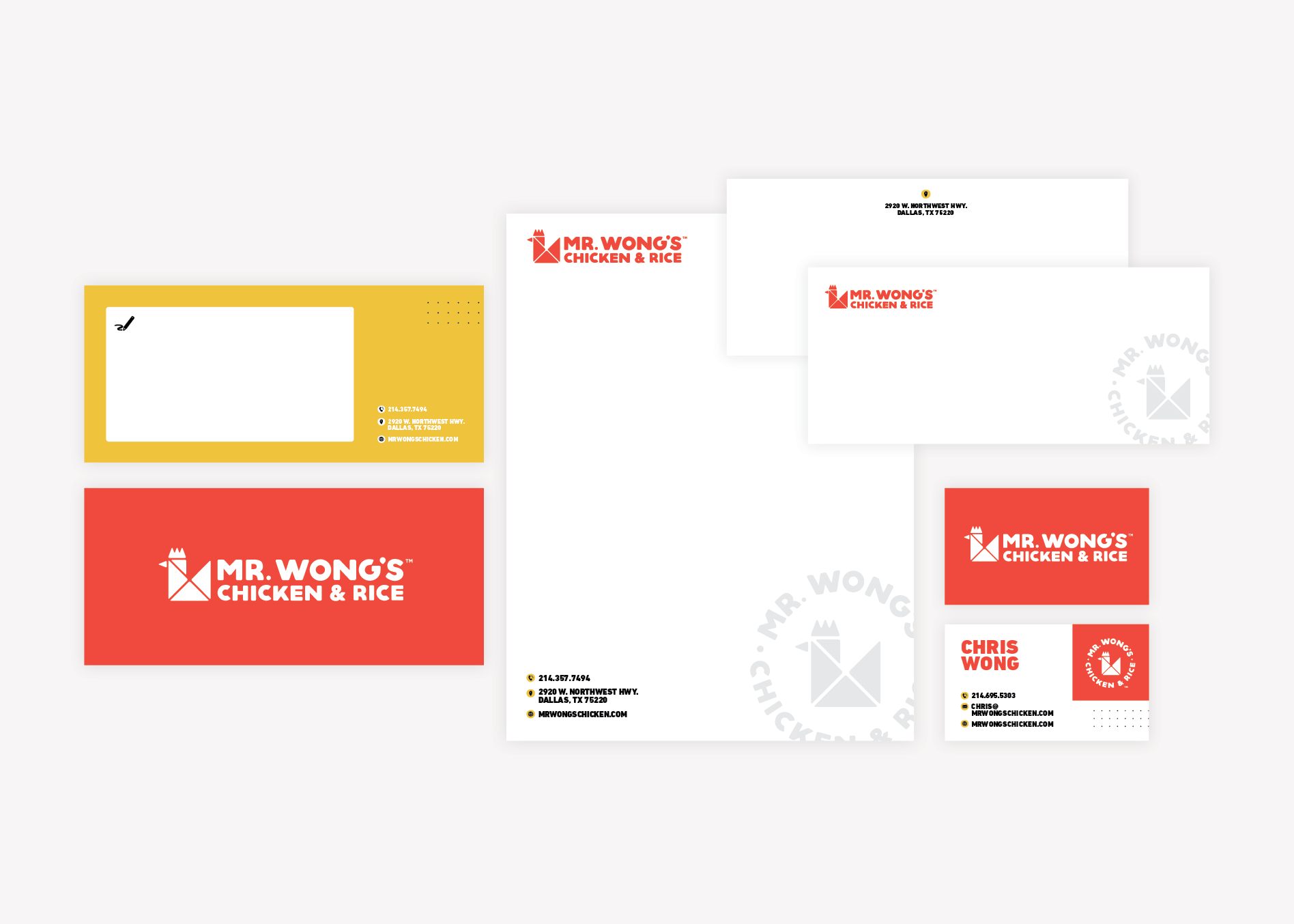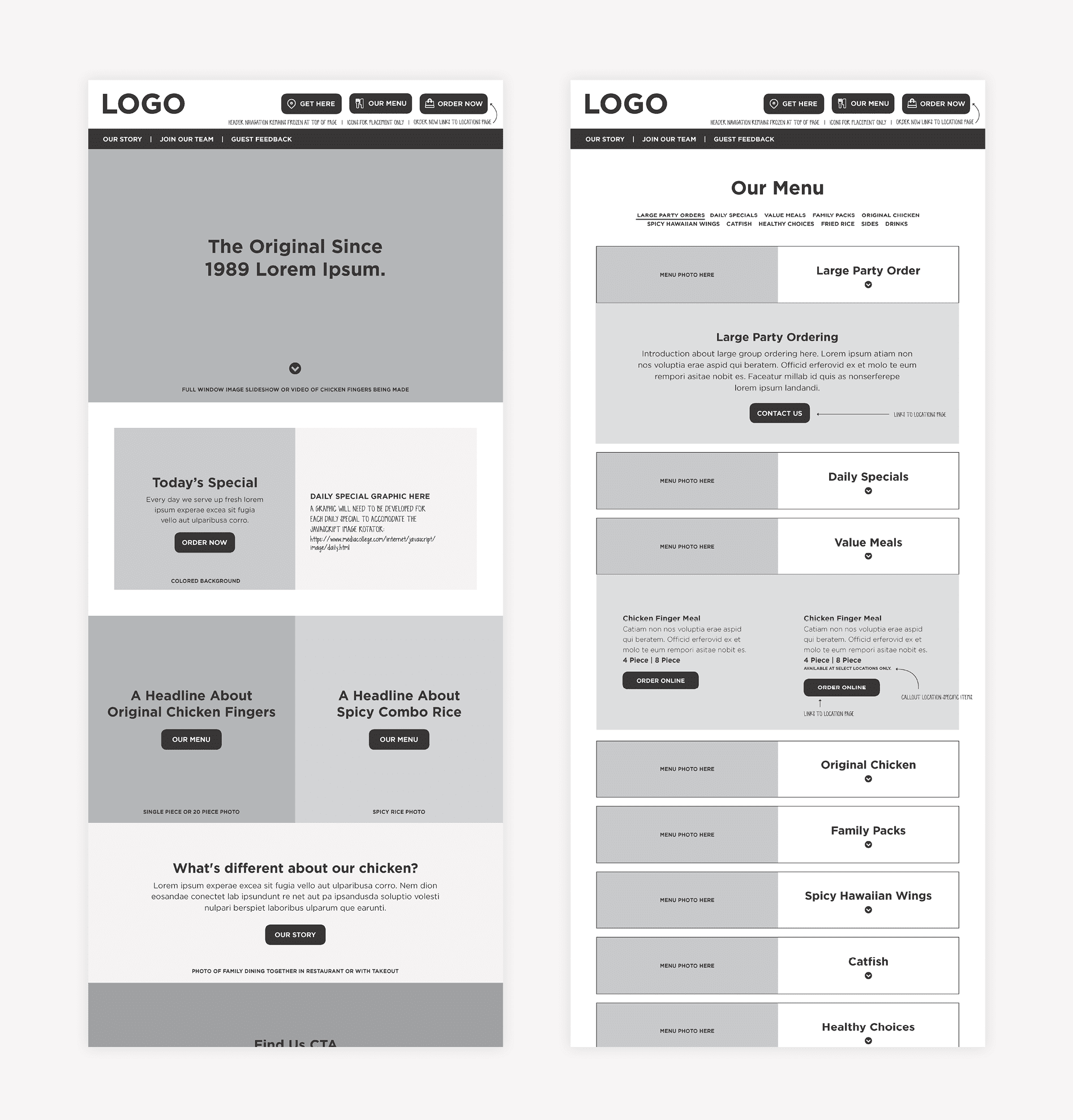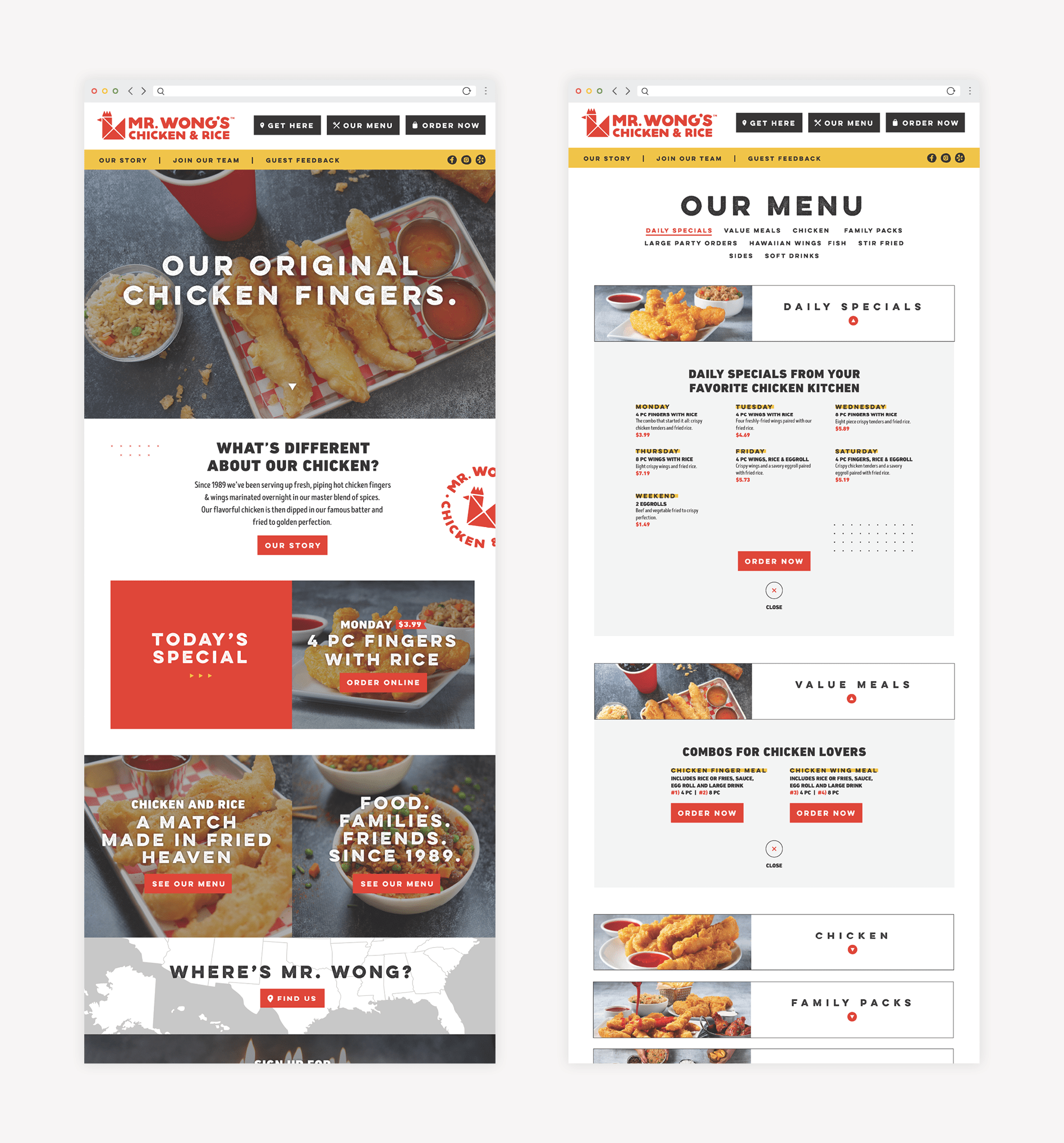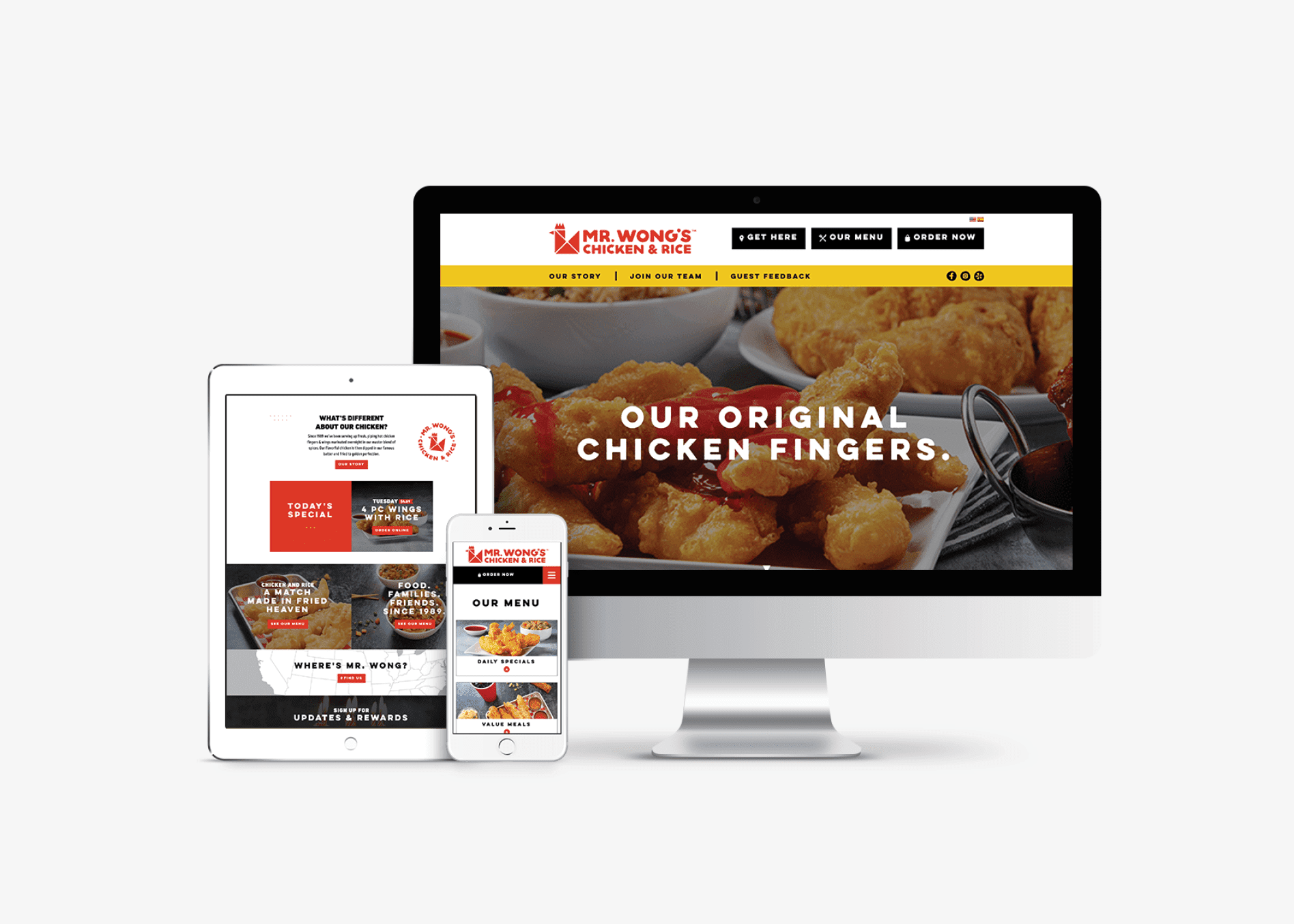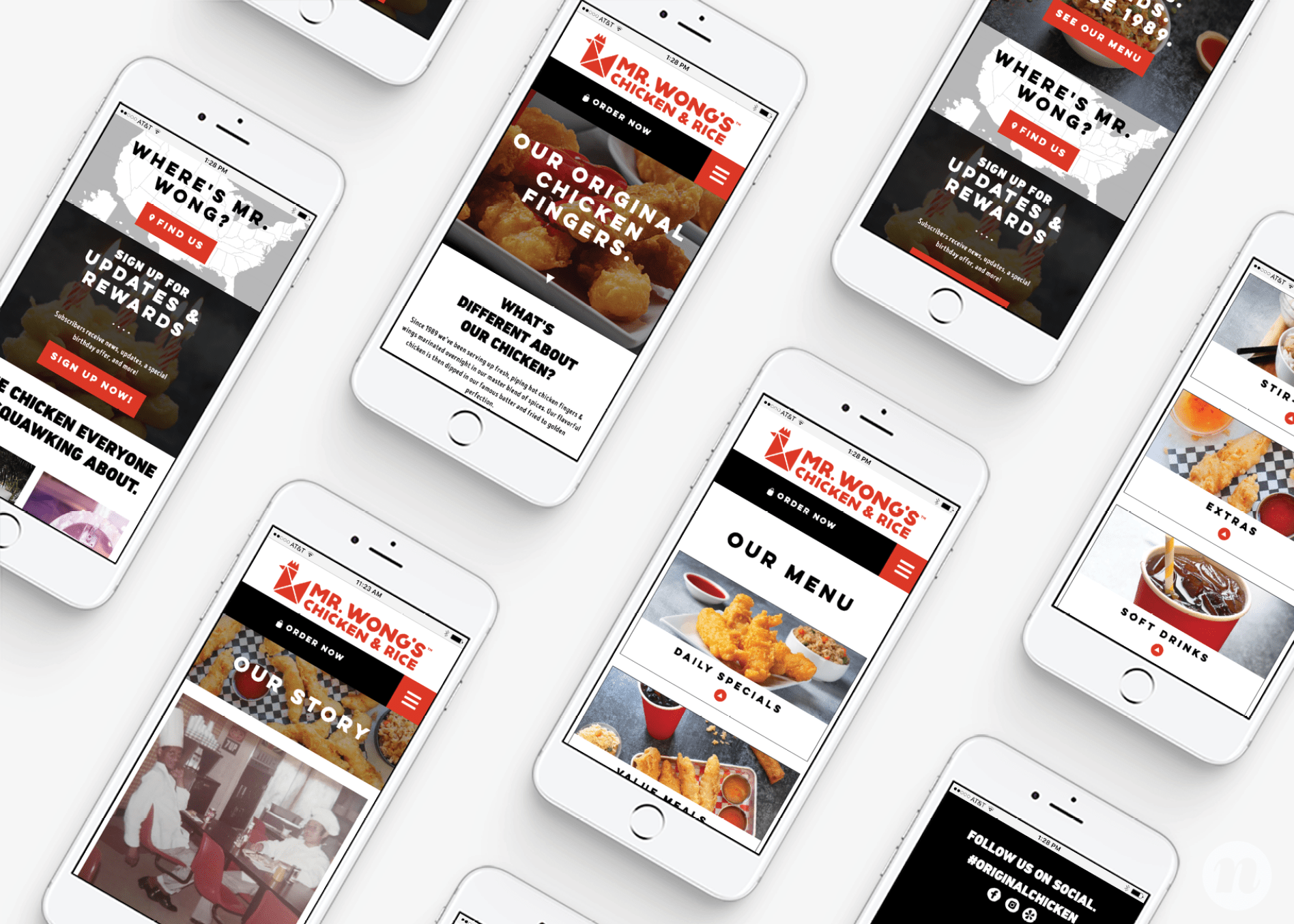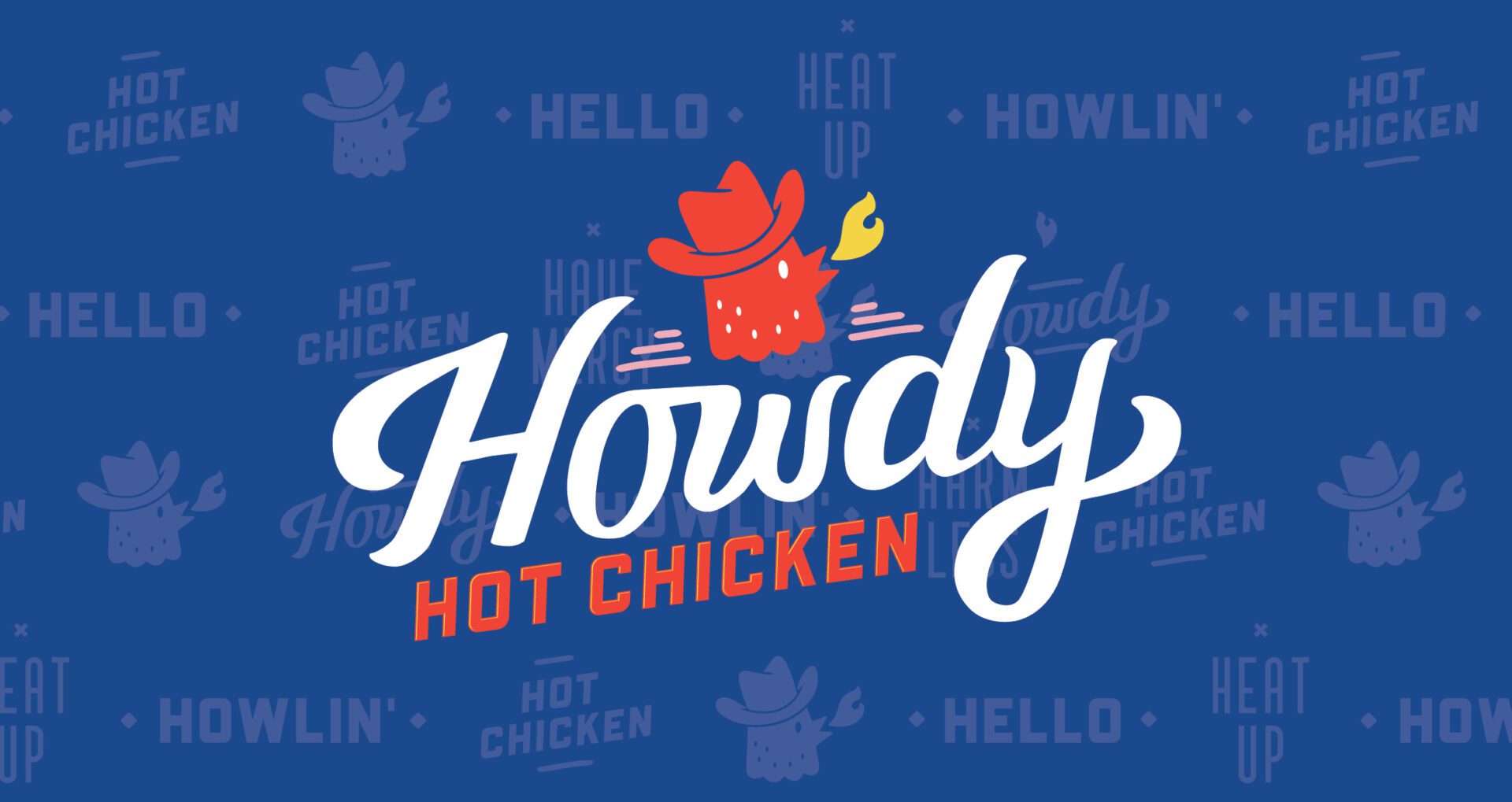Our restaurant branding agency worked on a restaurant rebrand project to create a bold new brand for Original Chicken-N-Rice.
The owners reached out to Nice Branding Agency with a need for a restaurant rebrand that would resonate with their existing customers, while also appealing to new ones. Their goal was not necessarily to bring in more business (although that never hurts, right?!) but to align the restaurant brand and brand support with a narrative that would resonate better. Additionally, changes to the business structure were impending, so a new brand was 100% necessary.
Restaurant Rebrand Project Kickoff
We kicked off the restaurant rebrand project with a trip to Dallas to meet with our clients. We sat down with them to learn about the restaurant and the people who eat there. We came to find out that the target market primarily consisted of working-class families and blue-collar workers. There was a large component of the market that was Spanish-speaking, as well.
The restaurant’s differentiators were pretty straightforward. They were a family-owned establishment that served up heaping portions at affordable prices.
The menu items consisted primarily of fan favorites that included tempura-battered chicken tenders, Hawaiian-style wings, fried and white rice, and an assortment of sauces, sides, and drinks.
We also learned that the restaurant had been started by an immigrant named Mr. Wong. He came to this country and was enamored by fast food concepts and their ability to serve good food at good prices. He started cooking out of the back of a convenience store before opening the very first Original Chicken-N-Rice concept with his business partners.
After years of success and a passion for his business, Mr. Wong retired and turned over the operations of the restaurant to his children, our clients.
As they worked to grow the restaurant and to separate certain locations from others, our clients relied on us to create a bold new restaurant brand that would keep them current in the fast-casual market.
Brand Direction
After reviewing the information provided, and working through our own research into the market and target, we got busy creating narratives and visual direction options for the restaurant rebrand. Our desire was to reposition the restaurant from an inexpensive place to grab food to a family-run restaurant that served fresh, heaping portions at friendly prices.
Additionally, we wanted to create visuals that more closely aligned with the bold branding that was winning in the QSR market.
We created three options for visual direction. Each of the brand boards we created could be used as a vessel for telling the story we sought to weave into the brand. These brand boards also allowed a natural way for our clients to have a say in the direction of the brand.
The chosen brand board retained a color palette that was similar to the existing Original Chicken and Rice brand; however, it implemented updated tones and a more modern approach.
We took into account the notes mentioned in our conversation with the client to create a visual direction that incorporates the natural elements — concrete, metal, natural wood tones.
Within the visual direction, we included modern illustrations to bring in the chicken concept.
This restaurant rebrand also includes modern, clean fonts and a yellow that’s warmer than the typical sunny hue often presented. We included an orangey-red color as well. These colors update and refresh the tones and existing colors to provide a much improved aesthetic while nodding to the “original” brand indirectly.
The graphics in this restaurant brand would be big and clean, as shown in the NY image and the Y image at the top right. The interior graphics would be uncomplicated as seen in the bottom left striped image, except where the illustrations come in, which would be more minimal.
Furniture and fixtures would be industrial with pops of color, while finishes would remain natural in materials and tones.
Black and yellow would be the primary colors for the brand, and red would come in sparingly, through the employee attire, menu, and food photography and potentially through graphics.
Stainless would come in through the fixtures and restaurant materials. Although the restaurant served its food on styrofoam, we proposed stainless trays. However, if that would not be possible, we considered looking to bring the stainless in through other materials.
Upon presentation, this board was approved and became the basis for the restaurant rebrand project.
